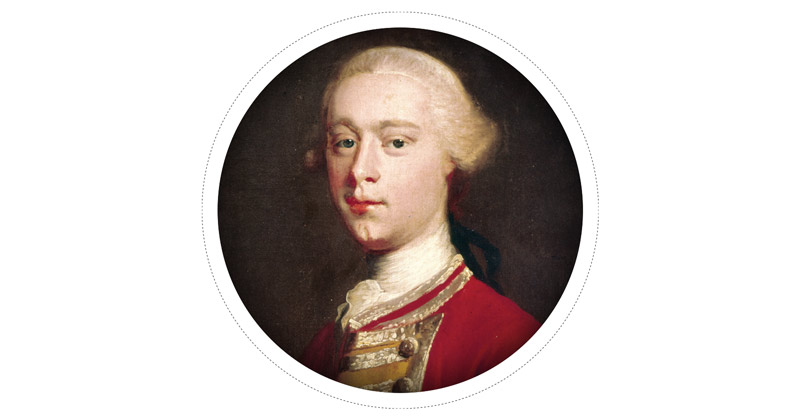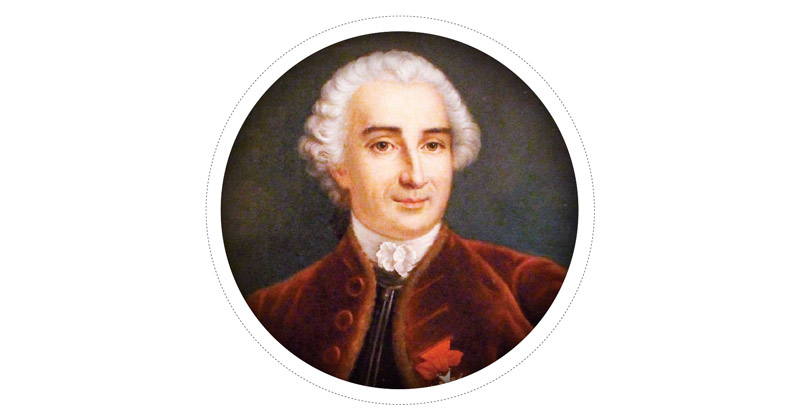
JAMES WOLFE
On Sept. 12, 1759, Major-General James Wolfe had been besieging Quebec since late June. The 32-year-old Wolfe wrote: “The Marquis de Montcalm is at the head of a great number of bad soldiers, and I am at the head of a small number of good ones, that wish for nothing so much as to fight him—but the wary old fellow avoids an action doubtful of the behaviour of his army.”
Now, Wolfe faced a decision. If he didn’t seize Quebec soon, the British must quit the siege and withdraw from New France before the St. Lawrence River froze. It was time to roll the dice.
Within 15 minutes the French were routed.
Bedridden through August, Wolfe was in poor health. This may have led to his proposing an attack virtually identical to one repulsed on July 31 along the shoreline at Beauport, east of the city. When his three brigadiers rejected the plan, Wolfe first accepted their counter proposal for an operation west of Quebec and then abruptly modified it in favour of striking from a beach just three kilometres west of the city walls.
From there, Wolfe’s forces would climb a 53-metre cliff in darkness to gain the Plains of Abraham. Once on the plateau, they could shake out in the famed British thin red line to meet the French. Assuming, of course, that the French would forsake their defensive walls to give battle. Wolfe was betting New France’s military commander Lieutenant-General Louis-Joseph de Montcalm would fight.
“Now, God be praised, I will die in peace.”
—Major-General James Wolfe after the French retreat
On the night of Sept. 12-13, Wolfe moved about 4,400 British regulars by flat boat to the beach. French sentinels were quickly overwhelmed by the leading light infantry who then spearheaded the climb. By dawn, the British infantry faced Quebec with two 6-pound cannon for support.
As Wolfe had hoped, Montcalm emerged at about 10 a.m. with about 4,400 men. Only 2,000, however, were regulars—the rest were militia and First Nations. As the French approached firing, the British waited until they were about 35 metres distant before firing two salvoes that “sounded like a canon shot.” Within 15 minutes the French were routed.
Wolfe had won, but he lived only a few minutes past the victory. Struck in the wrist, groin and chest—the last by a piece of artillery shrapnel—he died. His body repatriated to England, Wolfe was given a hero’s funeral. In 1772, a memorial in his memory was unveiled in Westminster Abbey.

When New France’s Governor General Pierre de Rigaud de Vaudreuil suggested reinforcing defences on the cliffs west of Quebec overlooking the beach at Anse-au-Foulon, Major-General Louis-Joseph de Montcalm laughed.
“Only God, sir, can do the impossible…and we cannot believe the enemy to have wings that would allow them in one night to cross water, land, climb rugged slopes, and scale walls.”
He did, however, send an additional 100 men there as a precaution. On the morning of Sept. 13, Montcalm awoke to discover that Major-General James Wolfe’s British regulars had done precisely what he believed only the Lord could achieve. More than 4,000 redcoats stood on the Plains of Abraham formed for battle.
Montcalm’s decision to emerge from behind Quebec’s defensive walls and confront the British remains a source of controversy. On one hand, Wolfe’s troops had severed the French supply lines and Quebec had only a four-day food supply within. Plus, shelling had left the city’s walls badly damaged and easily breached. But, giving battle so quickly meant not waiting for half of his forces—positioned east of the city—and more artillery to reinforce the garrison.
Some historians argue that such a wait would have enabled the British to dig entrenchments, but French attempts to do so a year earlier had found the ground virtually impenetrable.
Whatever the reason, Montcalm decided to fight and to do so immediately.
Whatever the reason, Montcalm decided to fight and to do so immediately.
He deployed in three lines with regulars in the first, militia the second and more regulars in the third. First Nations provided flank protection. Montcalm rode out with his troops astride a spirited bay, heedless that he presented a clear target.
The French charged, firing muskets as they ran. After discharging their guns, the militia paused to reload, and the three lines fell into disarray. When the British returned fire with muskets and grapeshot from two 6-pound guns, the French attack faltered, then collapsed into a rout.
“Only God, sir, can do the impossible…and we cannot believe the enemy to have wings.”
—Major-General Louis-Joseph de Montcalm
During the retreat, Montcalm was struck by a shot to the loins. As he lay dying after having surrendered Quebec to Wolfe’s successor, Montcalm said: “It’s nothing. Do not grieve for me, my good friends.”
He died at about 5 a.m. on Sept. 14. A monument erected at Quebec in his memory reads: “The gallant, good and great Montcalm…at last defeated through no fault of his own.”
Advertisement





















